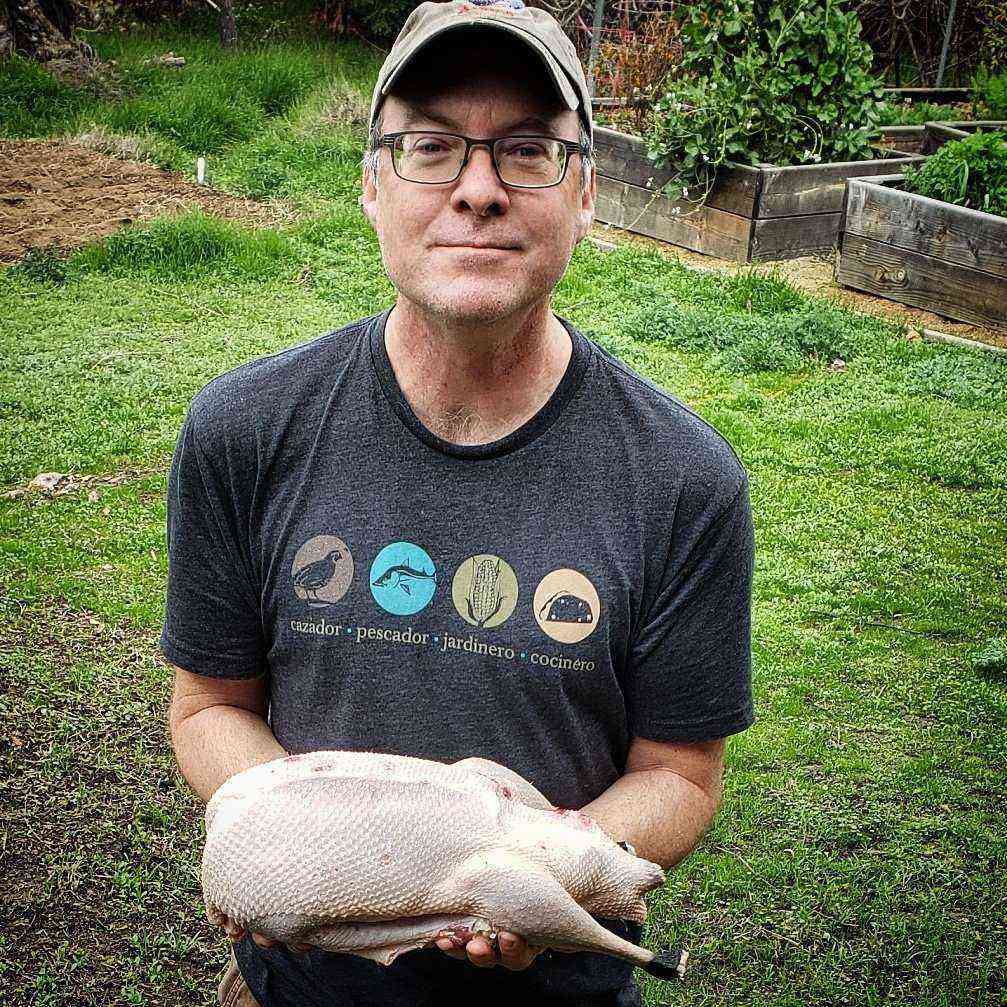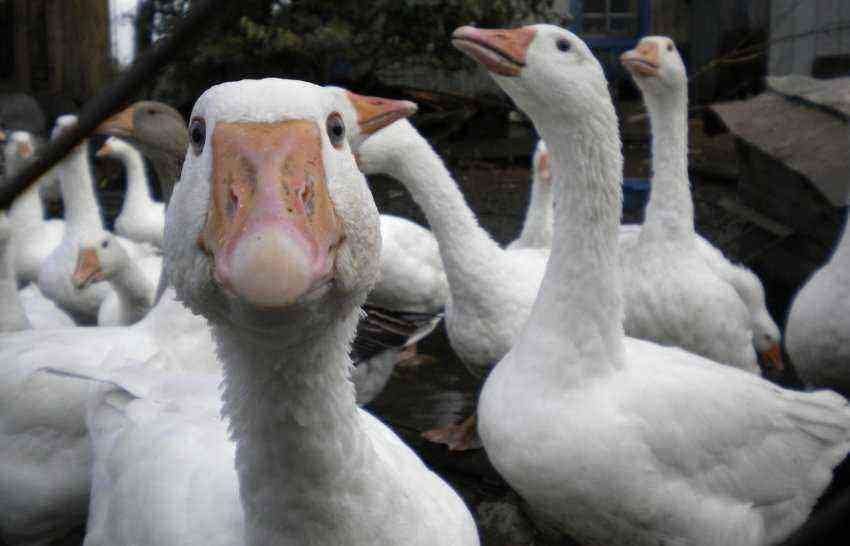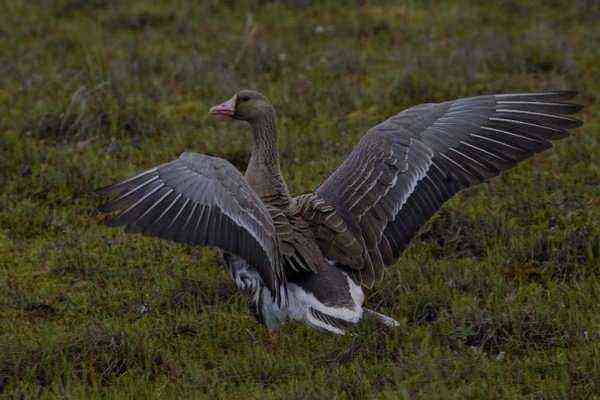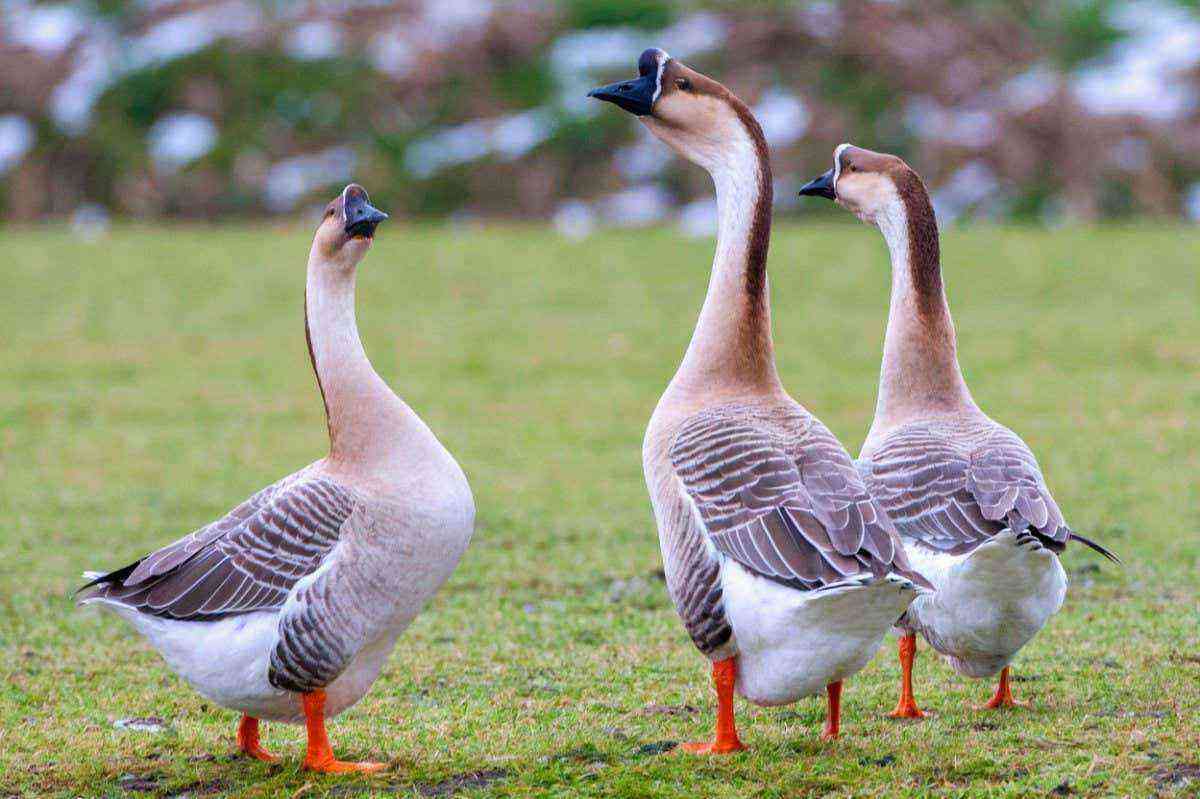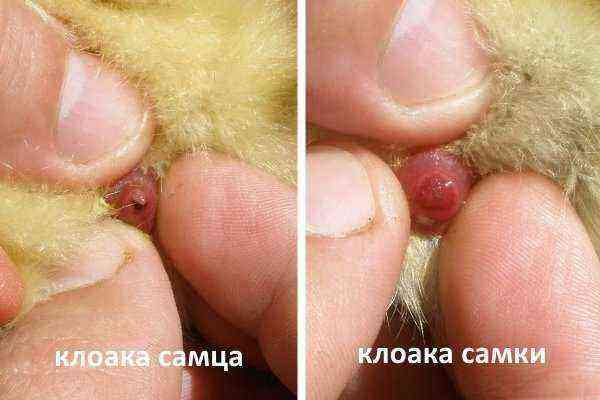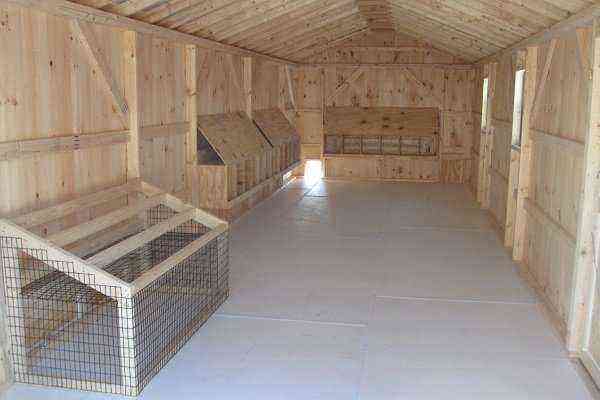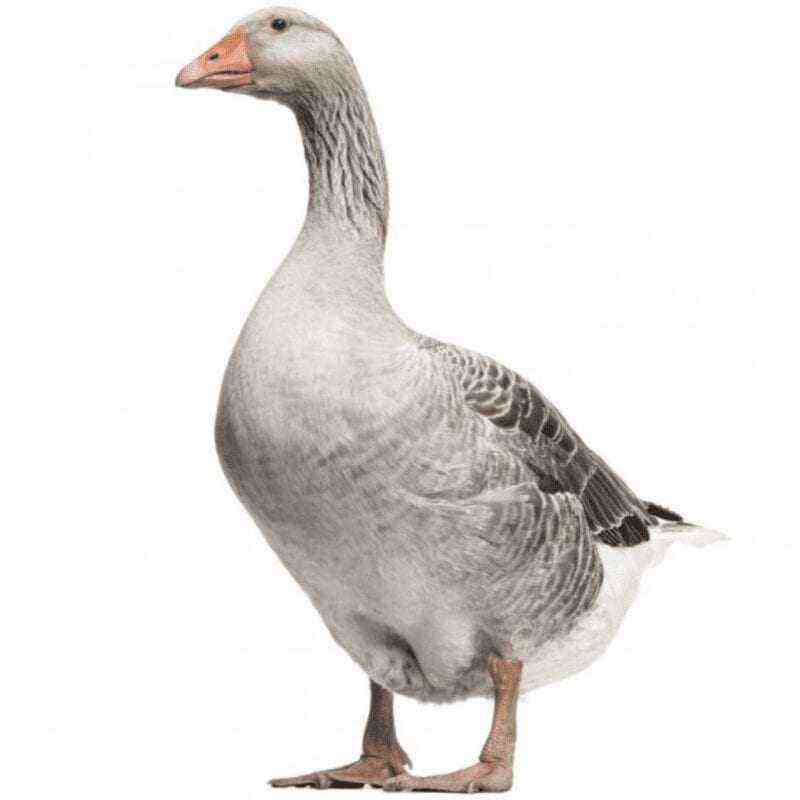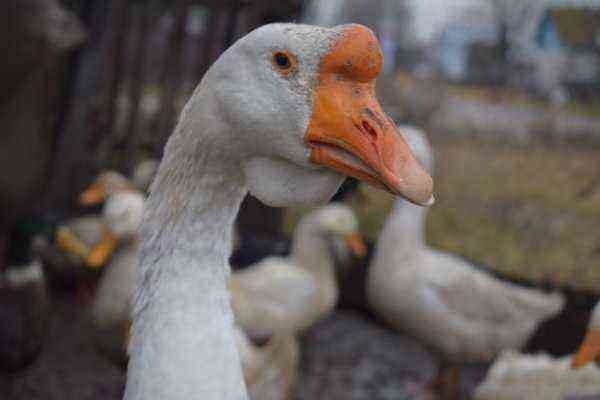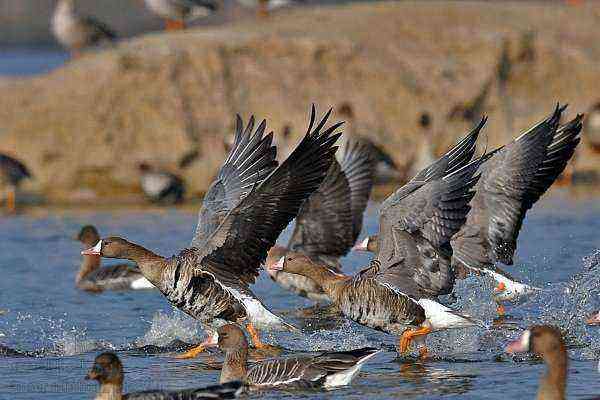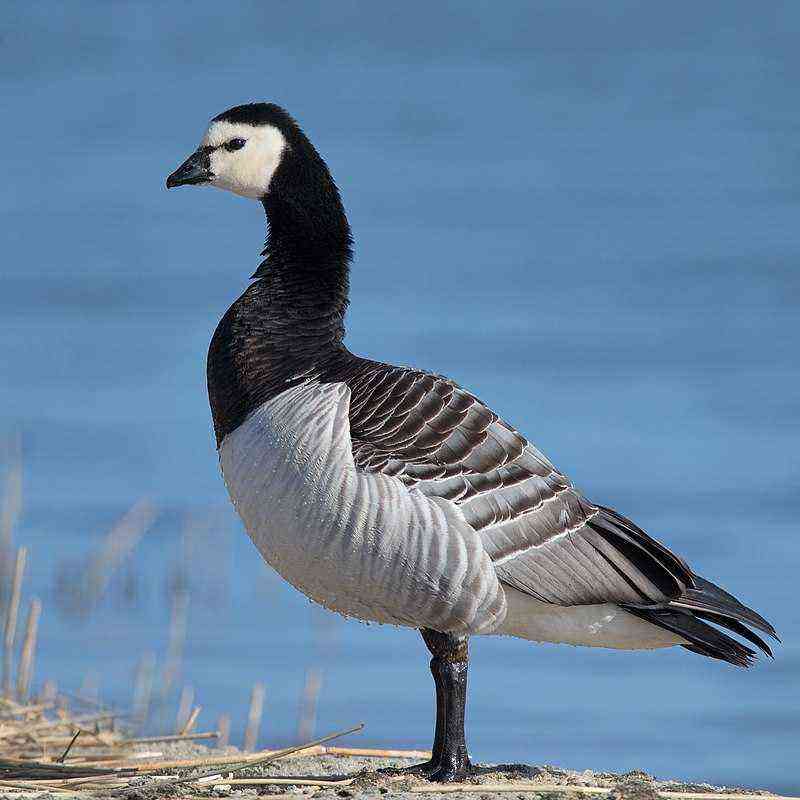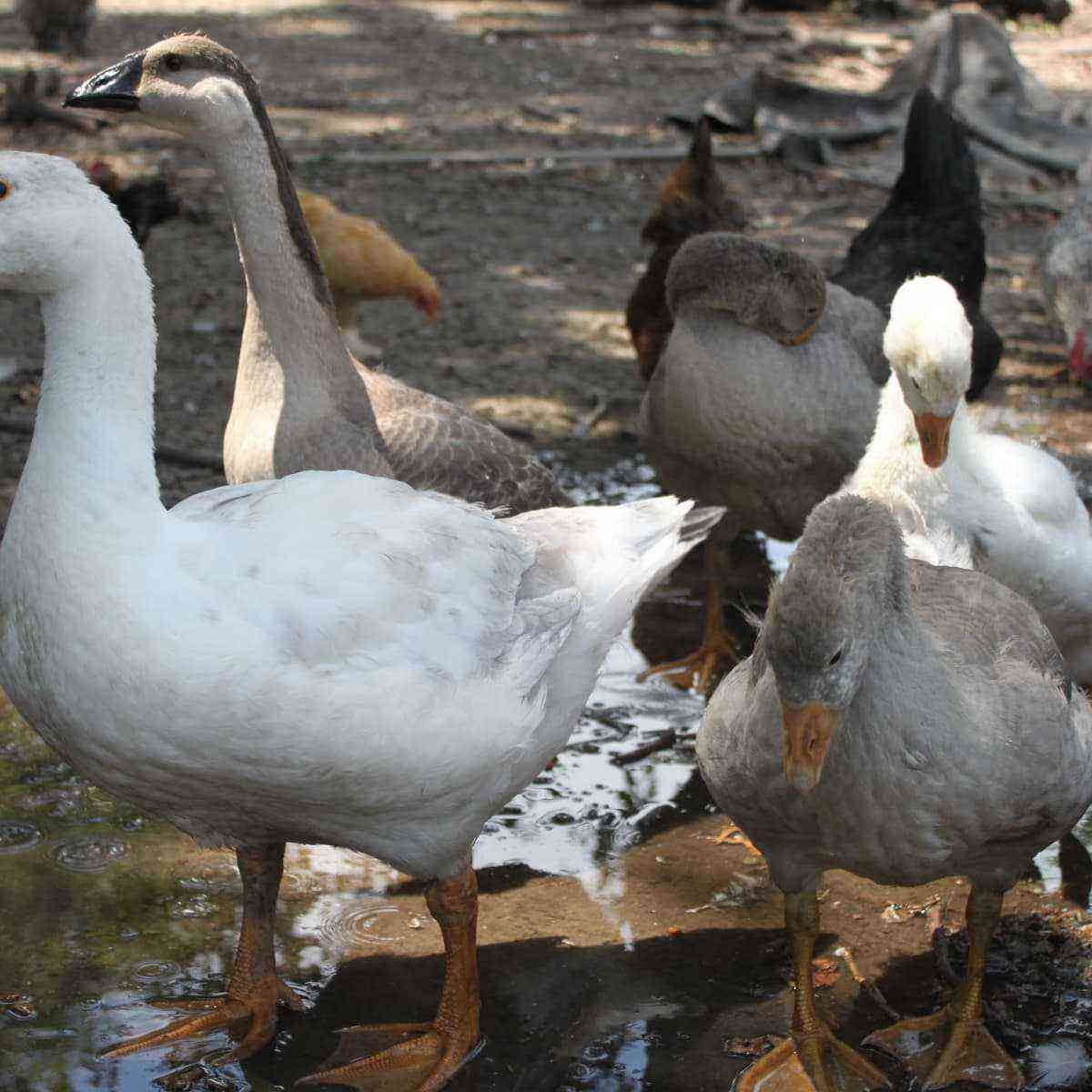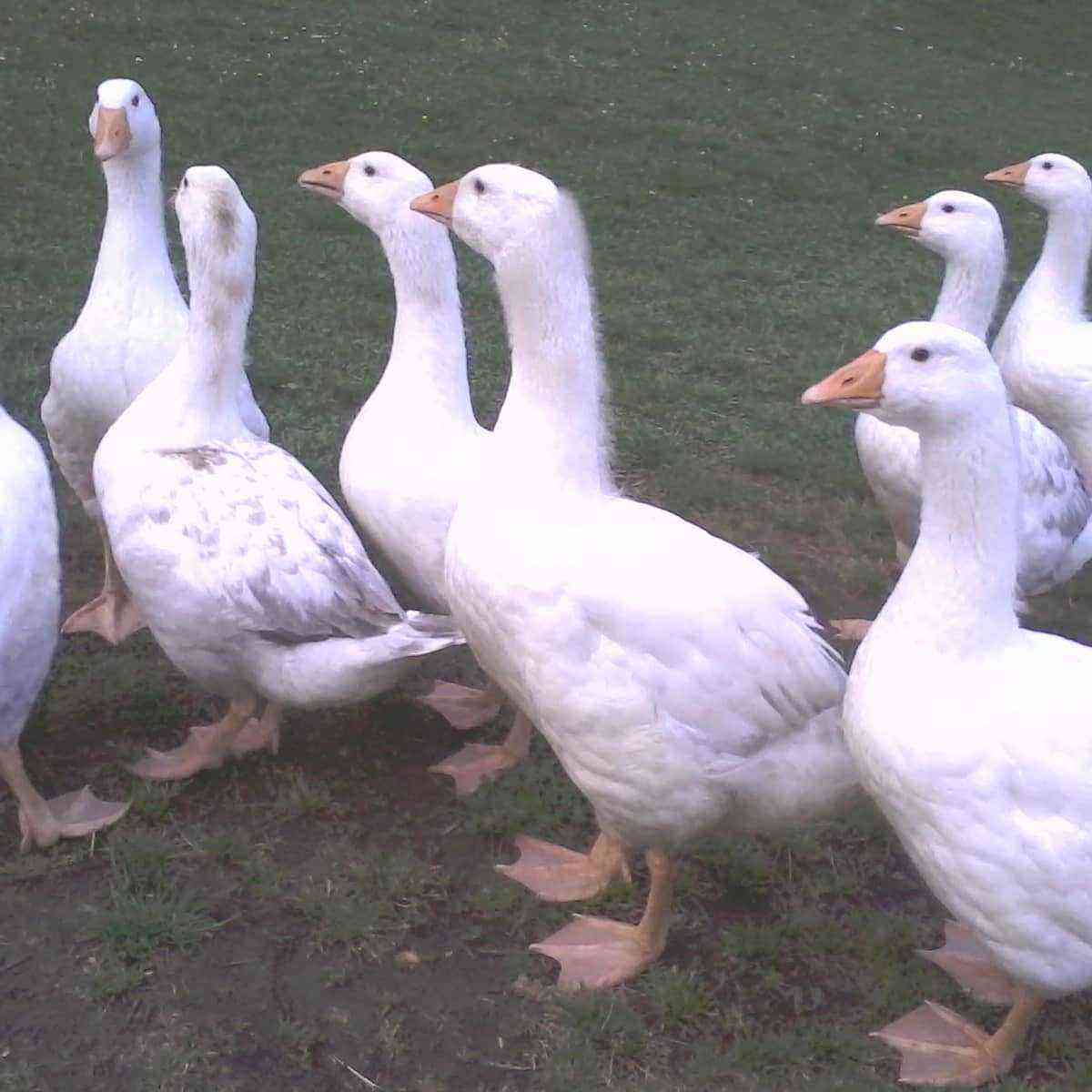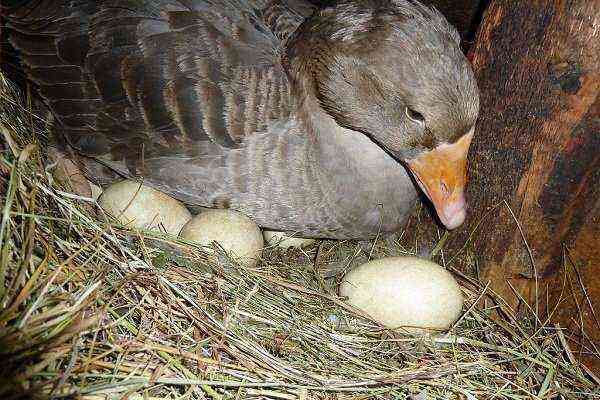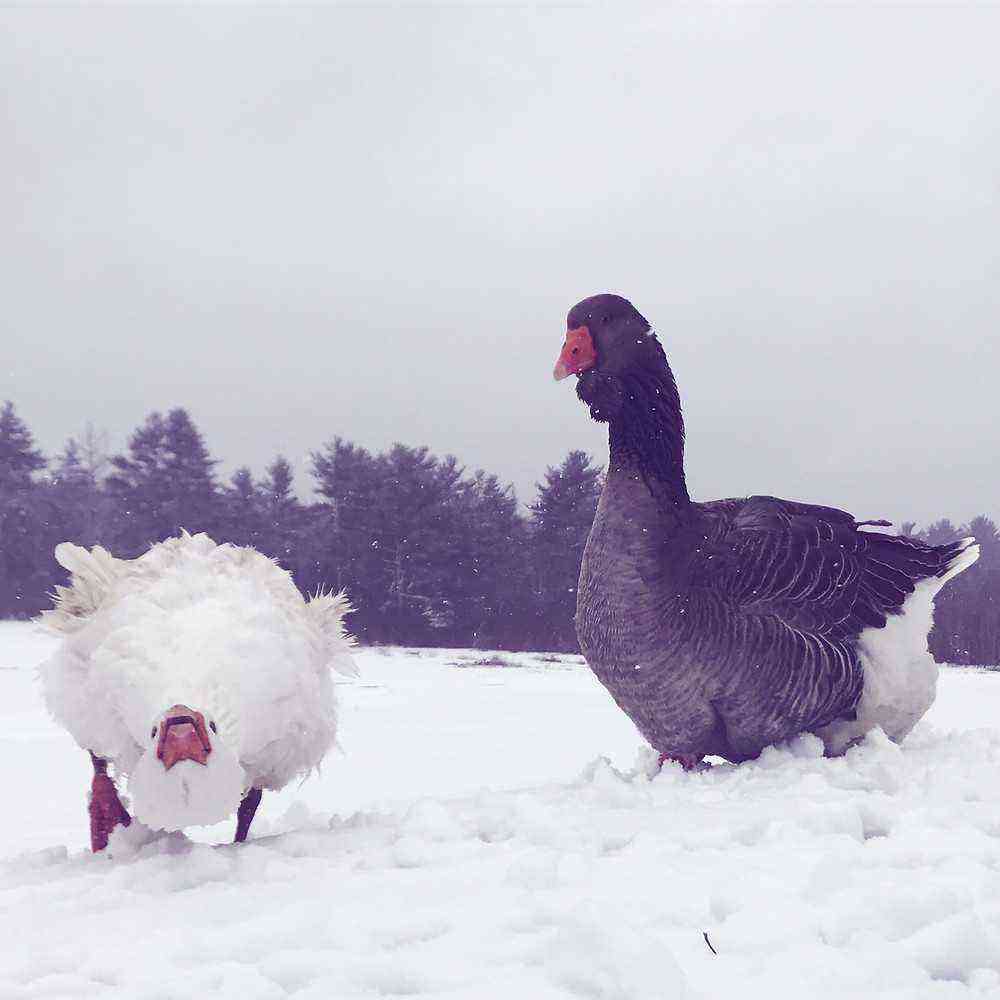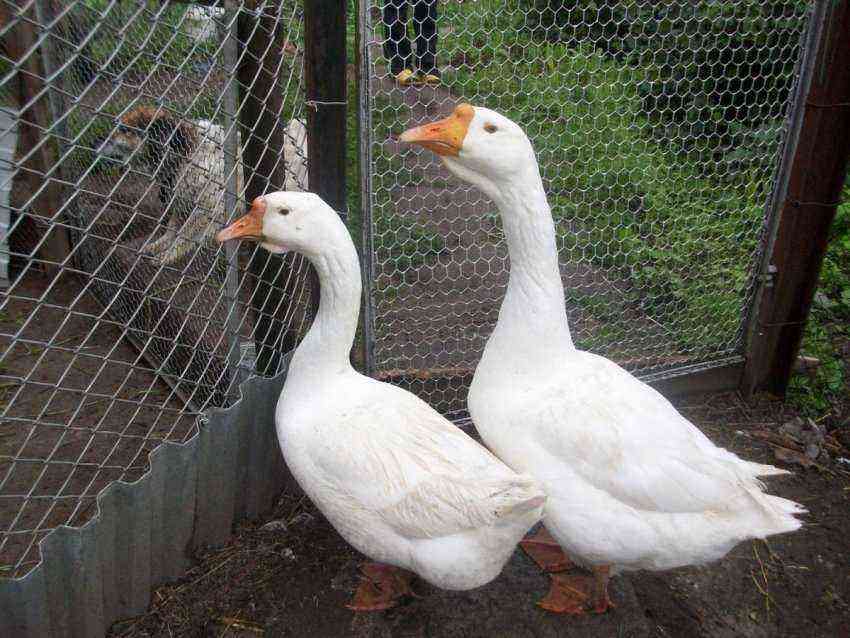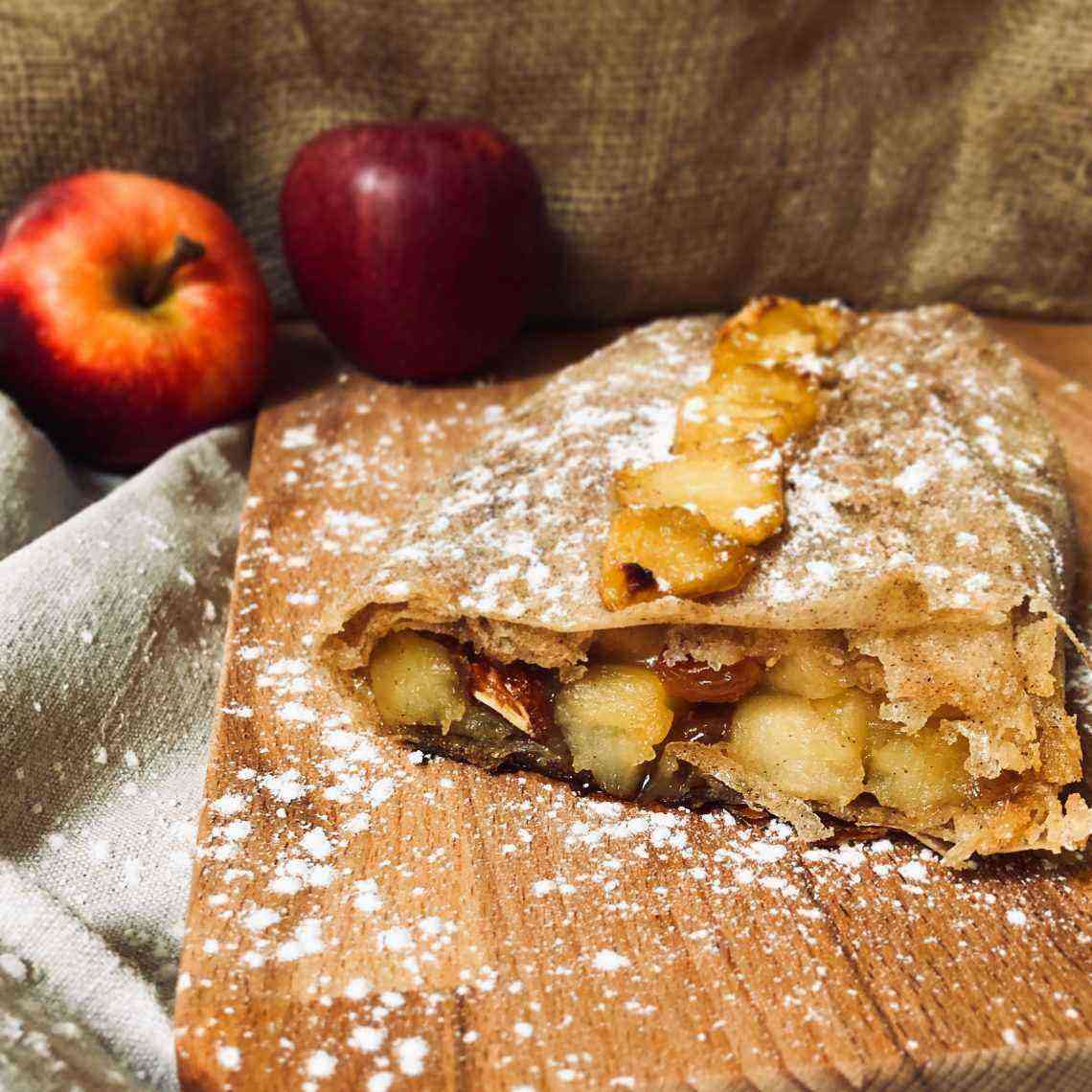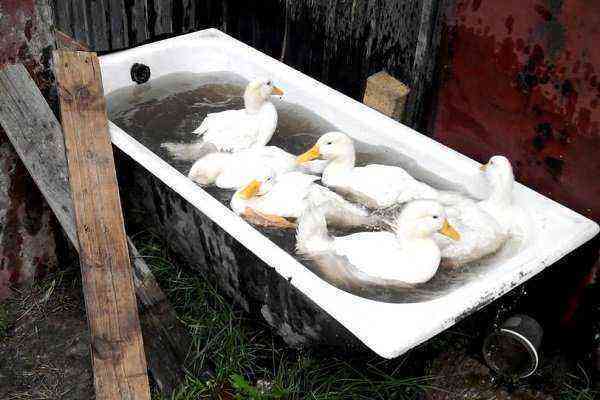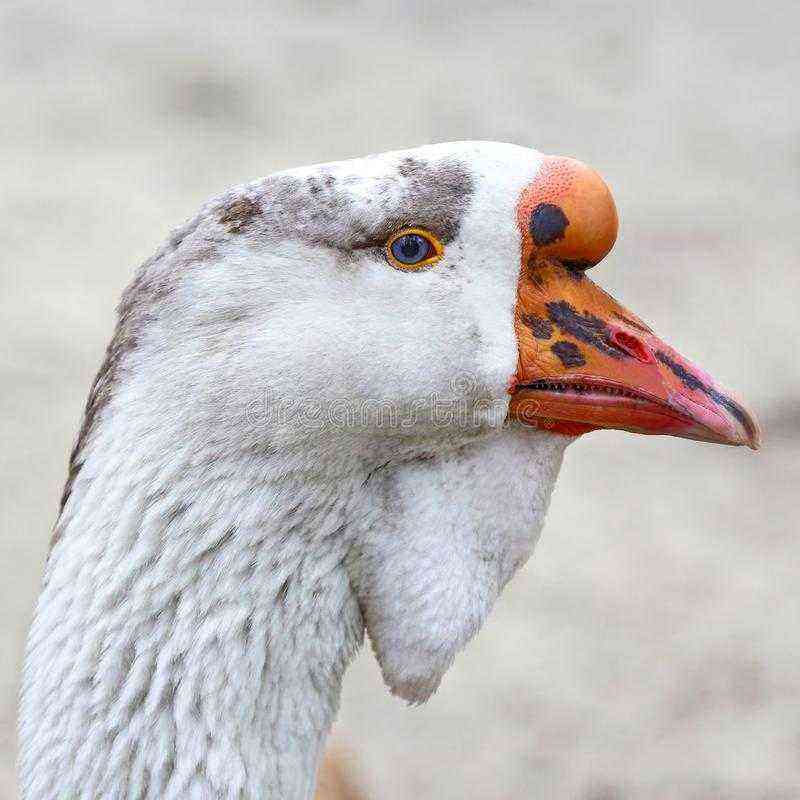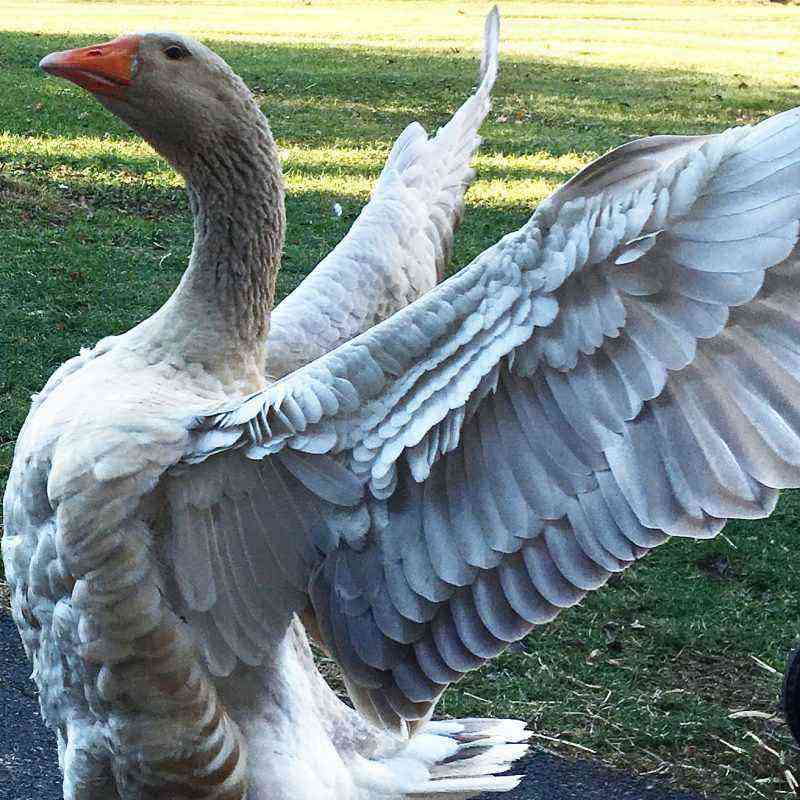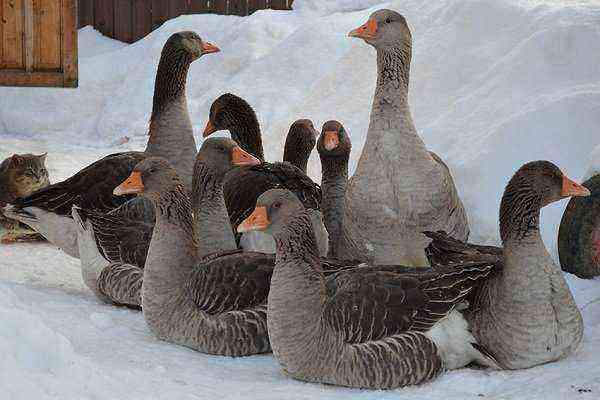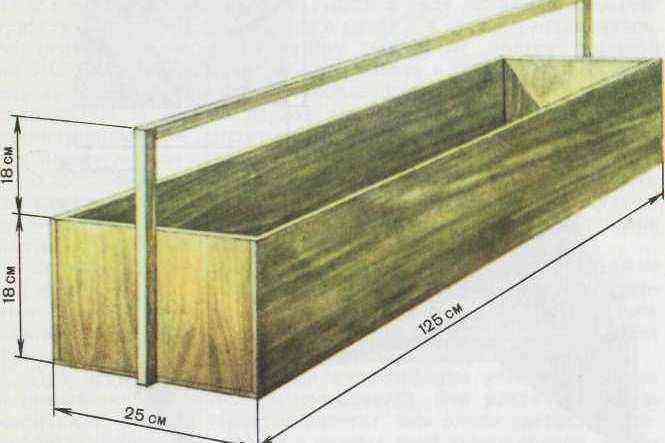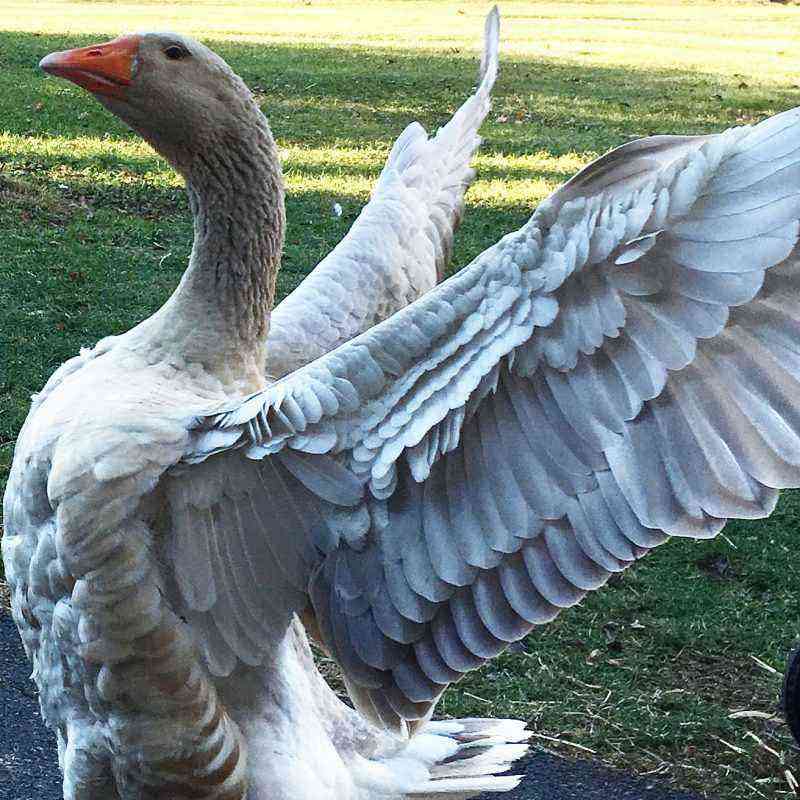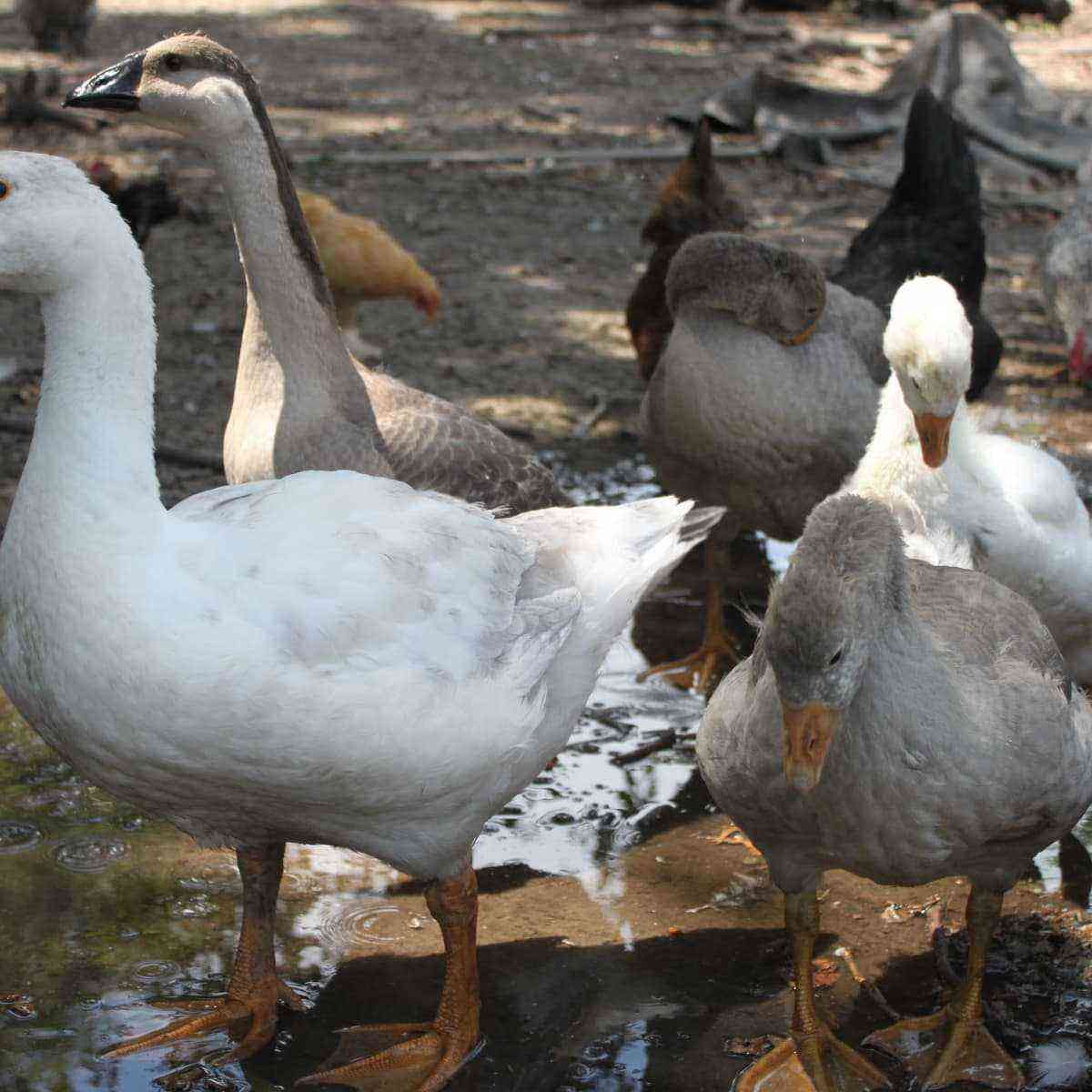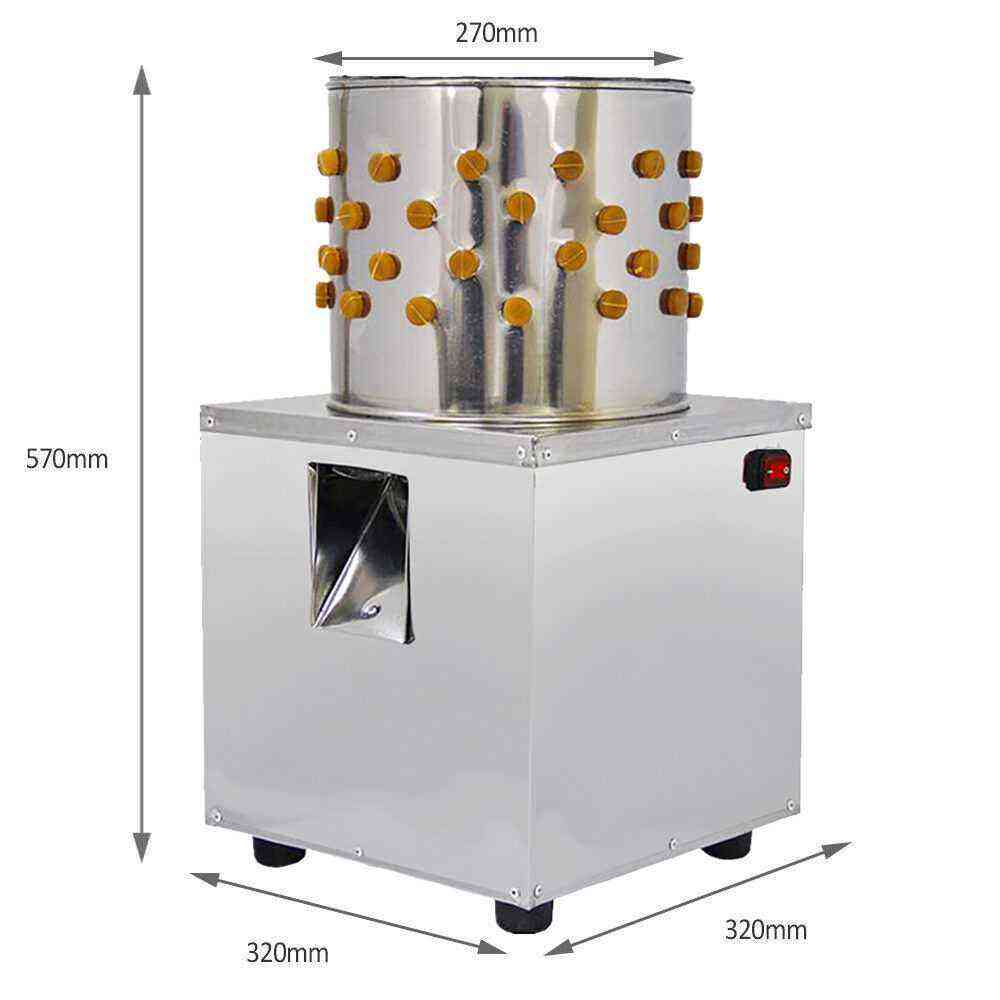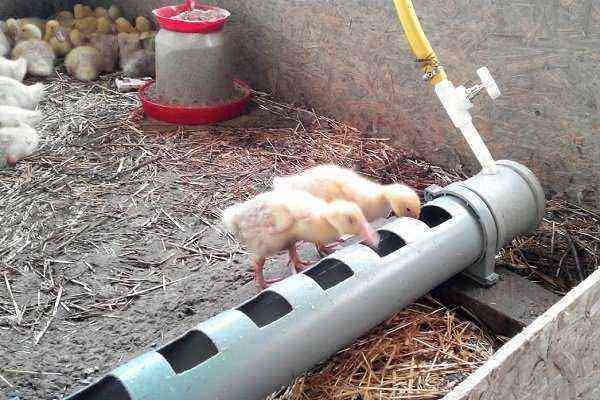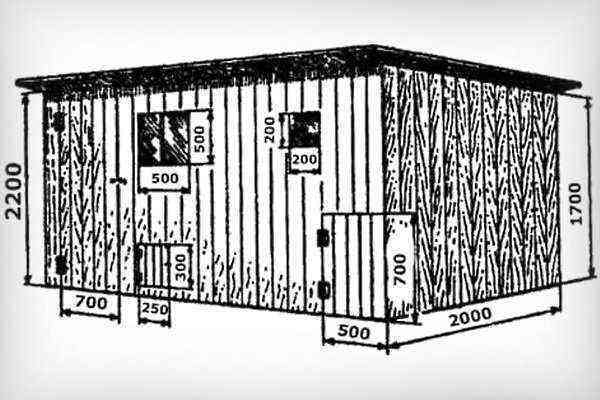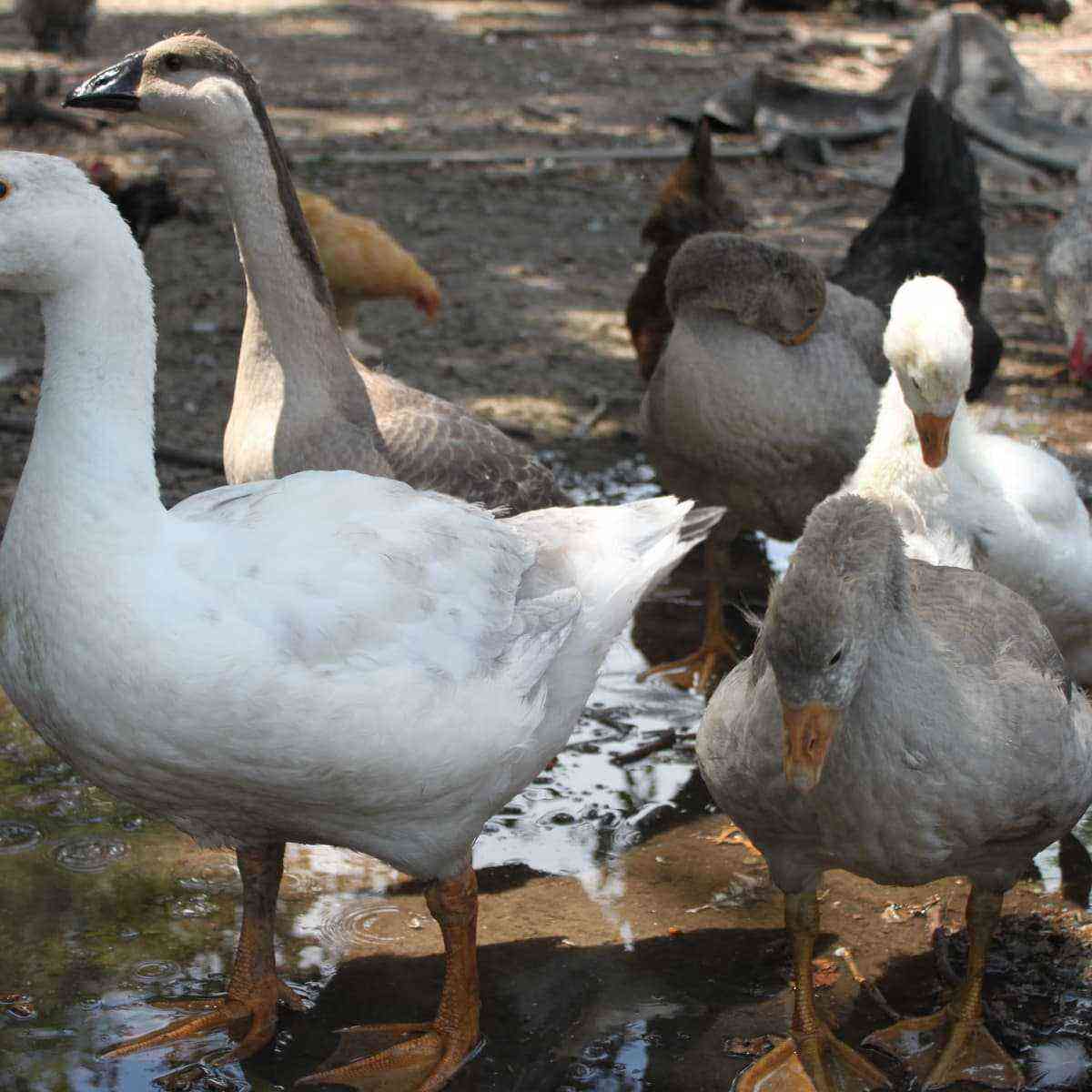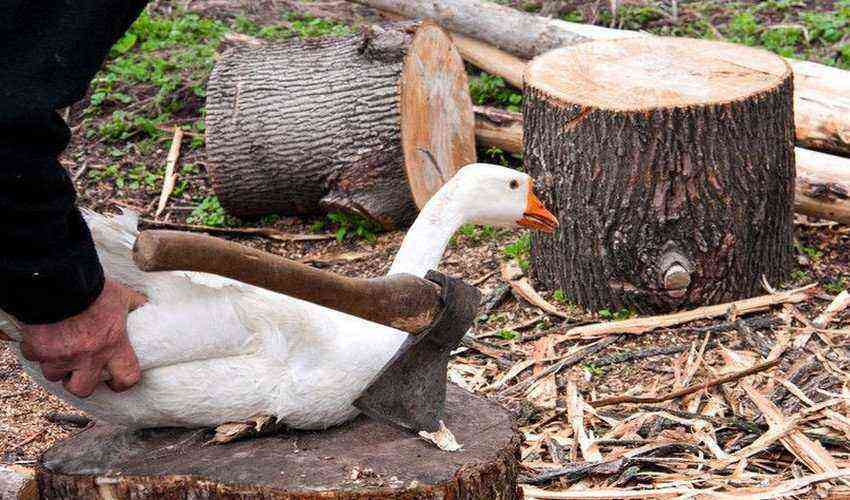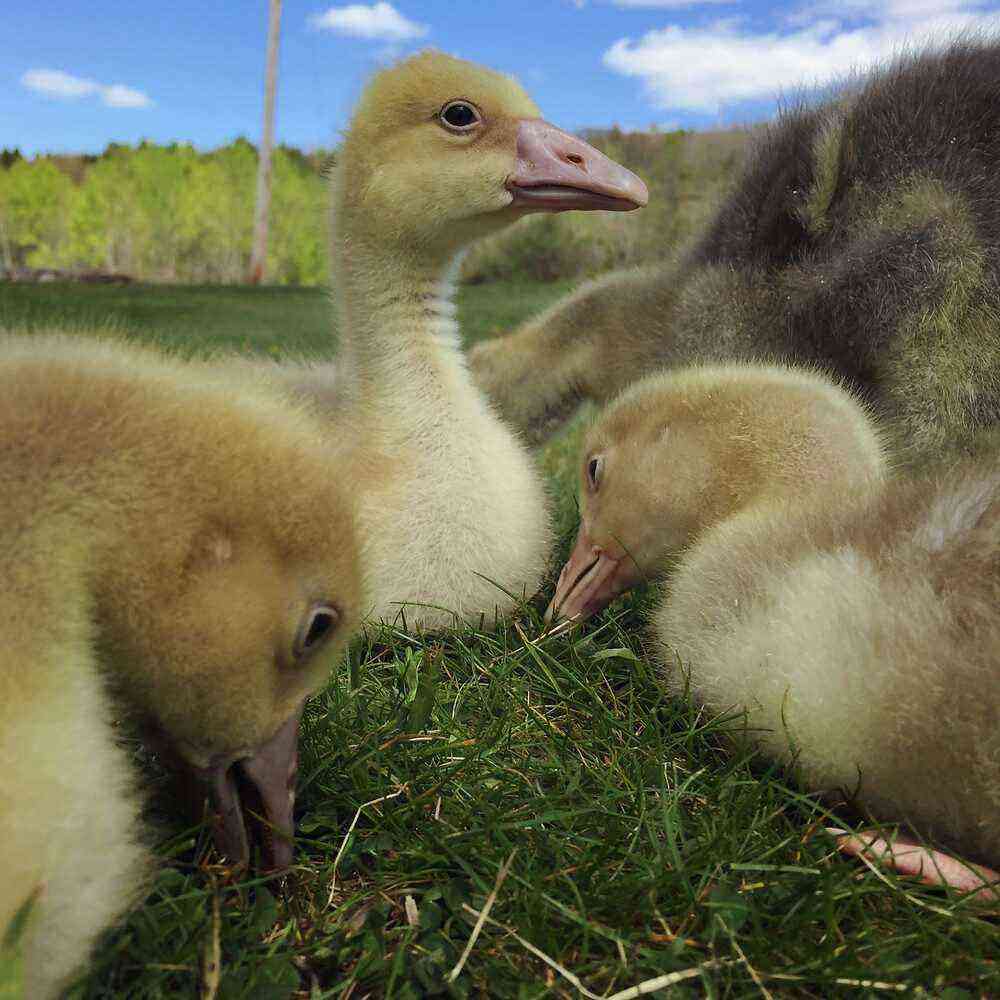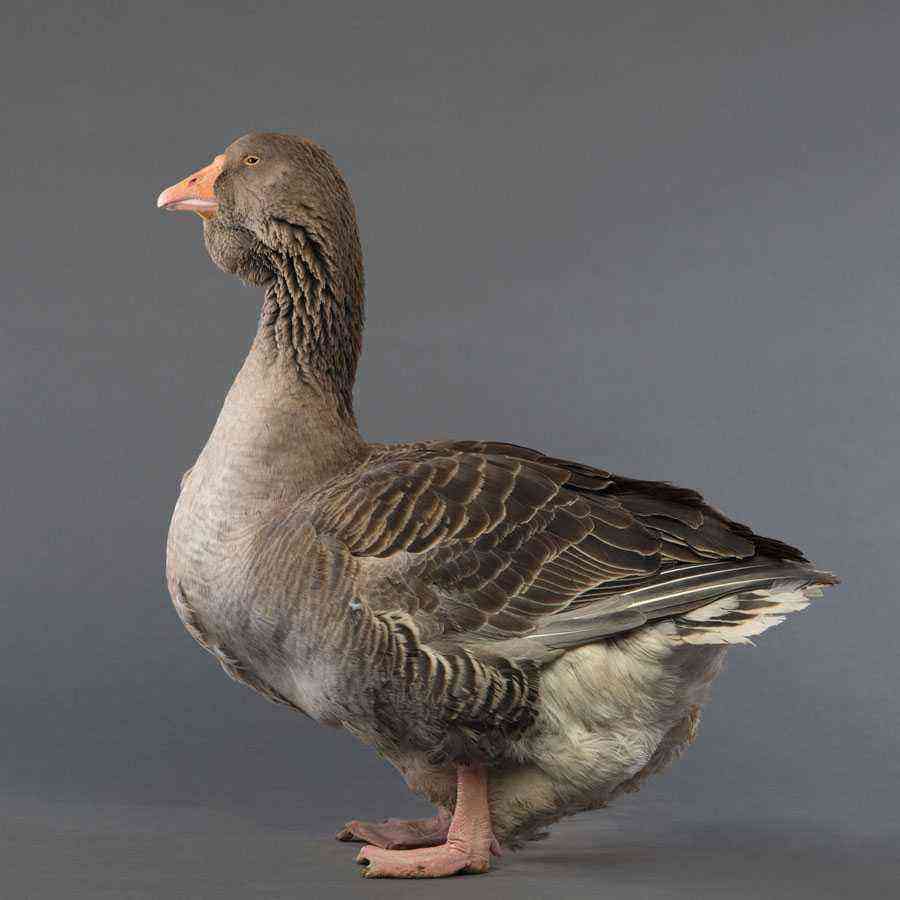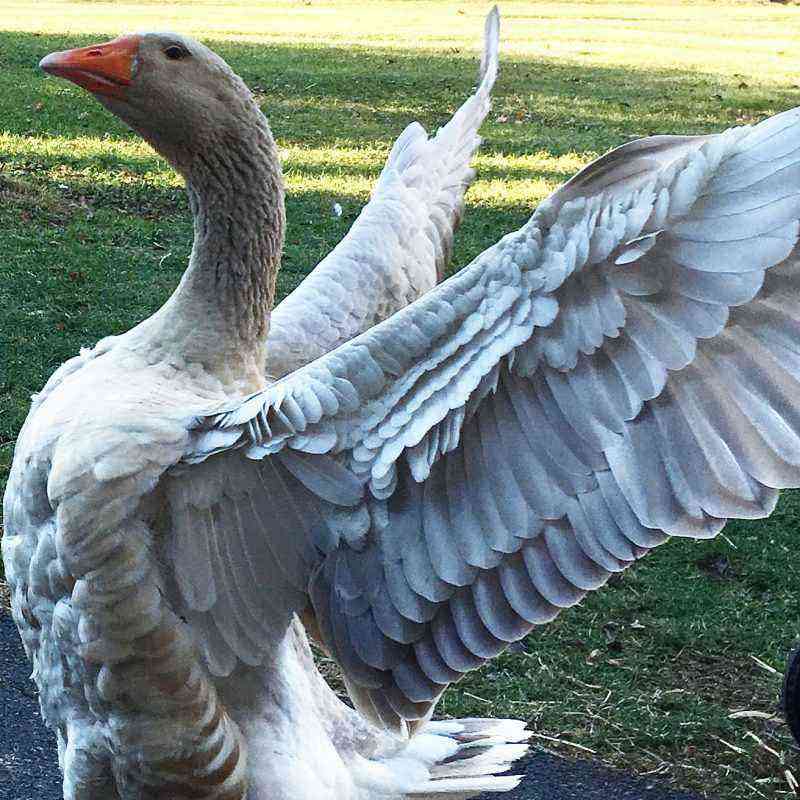Chinese geese are one of the most prolific and unpretentious breeds. These small, strong and hardy geese, leaning on green fodder, are prolific, distinguished by quality meat, tasty and tender. We will learn how to breed and maintain a Chinese breed, how to breed and feed goslings?
History of occurrence
The ancestors of Chinese geese are waterfowl from the family of ducks, called sukhonos. The latter were domesticated in Manchuria. From China, these birds were brought to Europe and Russia.
In order to borrow the best qualities of the “Chinese”, our breeders actively used them to create new breeds. With the participation of Chinese geese, the famous Kholmogory, Pereyaslav, Kuban, Gorky breeds were bred.
Description of the Chinese breed
Chinese geese are stately and slender. Characteristic features of the breed:
- The average size of the body, slightly elongated in length. The front is slightly raised.
- The neck is long, strongly curving – similar to the neck of a swan.
- The head is elongated. There is a bump on the forehead – this characteristic feature makes it easy to distinguish the breed.
- The chest is rounded, smoothly passes into a powerful stomach.
- The beak is small. Color – bright orange or dark brown, sometimes almost black.
- The tail is short.
- Paws are strong, set apart.
- The plumage is thick and dense.
Some birds may have a small leather pouch above their beak. The voice is sonorous, high.
Vices
Defects in the breed are rare. Possible birth defects:
- too thick neck;
- underdeveloped bump;
- sagging abdominal folds.
Subspecies
By color, Chinese geese are divided into two subspecies – gray and white. The body standards for white and gray Chinese geese are the same, the body, paws, beak, neck and other parts of the body correspond to the features described above.
White Chinese geese
The white subspecies of the Chinese geese appeared as a result of the domestication of the knobby Chinese goose. White “Chinese” were bred for a long time back in Soviet times, they are still popular today. The description of the white subspecies coincides with the general exterior features of Chinese geese. The only distinguishing feature is the white plumage. The color of the beak, paws, frontal cone and metatarsus is bright orange.
The white subspecies attracts farmers with good reproduction rates – 70-80%, and high vitality of goslings – up to 99%. The disadvantage of white “Chinese” is considered to be the aggressive behavior that these geese observe in certain periods.
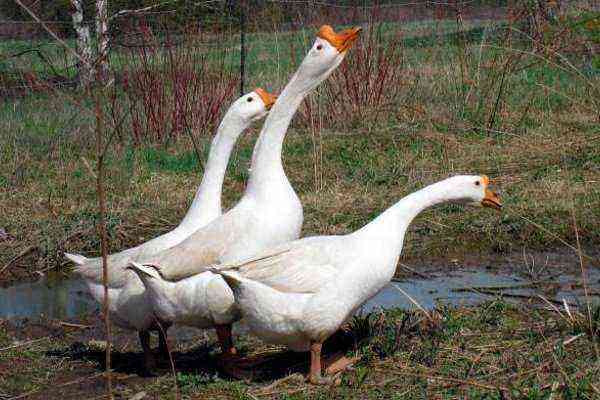
Gray Chinese geese
The gray subspecies has the same ancestors as the white subspecies. Gray “Chinese” have been actively bred in Russia since the 18th century, and actively crossed with other breeds to improve their meat characteristics.
The difference between the gray subspecies, like the white one, is only in the color of the plumage:
- Birds are generally gray-brown in color.
- There is a white stripe along the edges of the wings, shoulder part and shins.
- The color of the thoracic region is pale brown.
- On the upper part of the neck – from the head to the shoulders, there is a dark stripe.
- Beak and frontal cone are black.
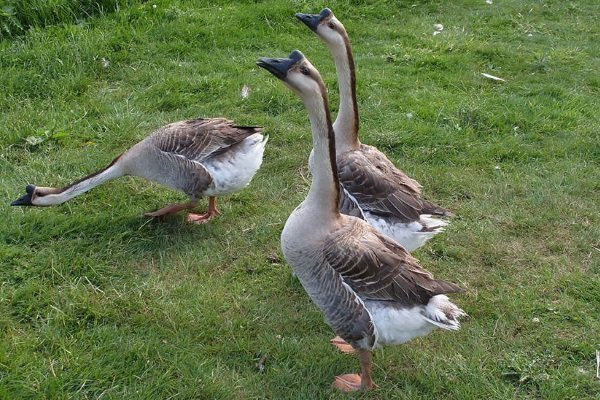
Features
Chinese geese are popular with farmers and small private households due to their excellent characteristics. This breed is tenacious, unpretentious, productive and breeds well.
Climate and distribution
Chinese geese come from the northeastern regions of China. They are undemanding to the conditions of detention, but they may not always adapt to extreme cold. The breed is ubiquitous, but it is most comfortable in regions where there are no extreme conditions – severe frosts and abnormal heat.
They thrive in temperate climates. The main thing is to provide them with a warm house for a period of severe frosts.
Productivity
The breed is medium-sized, it is grown for eggs and meat. Goslings quickly gain weight, at 9 weeks they weigh 3 kg. Goose egg-laying, starting in December, lasts six months. Key performance indicators in table 1.
Table 1
Productivity indicator Value Goose weight, kg 4-4,5 Gander weight, kg 5-6 Maximum number of eggs per year, pieces 120 65 months, kg 70-45
Sexual maturity in males and females occurs at 9-10 months of age.
Maternal instinct
In geese, maternal instinct and incubation instinct are poorly developed. Adult birds – geese and ganders often, not recognizing the brood, do not protect it from predators and dangers. The farmer has to take care of the safety of the goslings himself.
Avian disposition
All geese are mobile and energetic, while Chinese geese can behave aggressively. That is why the “Chinese” are kept separately from other birds and breeds of geese. Birds are especially aggressive during oviposition. Chinese geese are noisy, often displaying their vocal capabilities.
Advantages and disadvantages
Advantages of the Chinese breed:
- high egg production;
- rapid growth of young animals;
- undemanding to care and nutrition;
- good taste of meat;
- quality fluff;
- excellent incubation characteristics of eggs;
- high survival rate of chicks;
- disease resistance.
Disadvantages:
- inferior to other species in terms of carcass weight;
- problems of survival in a harsh climate;
- the parental instinct in males and females is poorly developed – few geese are able to incubate eggs.
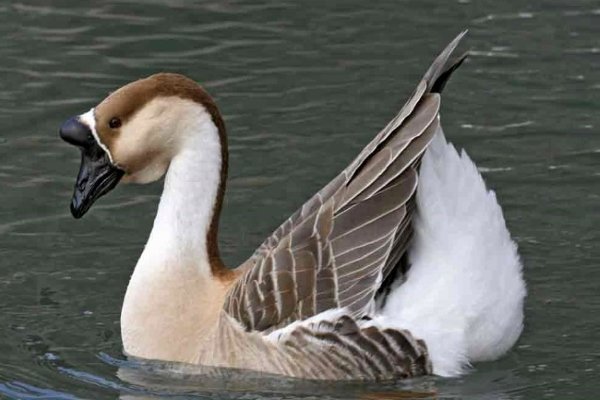
Features of the content
Undemanding to the conditions of detention is one of the key advantages of the breed. Caring for Chinese geese comes down to performing standard activities that even a novice poultry farmer can handle. The main thing is to provide the birds with a good poultry house, a spacious range and good nutrition.
Requirements for the room
Chinese geese definitely need a poultry house. Without a warm room, they cannot survive the winter. If there is a severe frost in the yard, then it is not recommended to take the birds out at all – they can freeze their paws. The entire cold season, geese are kept in a poultry house, and in good weather they are released for a walk in the fresh air.
Bird house requirements:
- The room is warm and dry, without drafts, but with effective ventilation, preferably with supply and exhaust.
- The height of the building is from 2 m.
- The area is calculated based on the number of birds and the maintenance rate – 2 square meters. m per goose.
- Lighting – natural and artificial. The minimum daylight hours are 14 hours.
- The optimum indoor humidity is 70%.
- On the floor of the barn – bedding made of hay, straw or sawdust. It is updated periodically.
- Nests are equipped in the poultry house, at the rate of 2-3 geese per nest.
Geese gain weight well and eat with appetite at +16°C. To monitor the temperature in the house, it is recommended to hang a thermometer in it.
Drinkers, feeders and other equipment
Birds should have XNUMX/XNUMX access to water and food. Drinking bowls and feeders are regularly cleaned and washed, removing food debris and debris that enters them.
In the poultry house and on the run, two feeders are installed. Food is placed in one, river sand, shell rock, gravel are placed in the other. They make feeders from boards, plywood, and other materials. Installation height – 20 cm from the floor surface.
Above the main feeders – 10 cm higher, feeders with additional food for ganders are hung.
Drinkers should be comfortable, they are made by hand or bought ready-made. There are special drinkers for poultry, which do not get garbage. Each individual should have 15 cm of drinkers. In winter, the drinkers are heated so that the water does not freeze.
Walking
Geese need walking for good growth and development. In the fenced area, the bird grazes, nibbles grass, just walks in the fresh air. Here, as in a poultry house, drinkers and feeders are placed. The passage through which the birds will go outside is made from the south or southeast side.
The paddock is fenced with a 1,3 m high net. A canopy is mounted so that the geese do not get wet during the rains and do not suffer from the scorching sun. On the run, Chinese geese can graze until the very frost. The longer the geese graze, the more fat the birds will build up by winter, and the more feed will be saved.
If there is a body of water nearby, the geese will be able to look for food there. In addition, swimming has a positive effect on the growth and health of waterfowl, which include geese.
Feeding
The diet of geese is somewhat different from the diet of other poultry. Geese have the ability to gain mass without consuming grain feed – it is usually used as a supplement to greens.
Diet
The main ingredient in the diet of Chinese geese is greens. If a bird regularly grazes on a paddock, feeds in a pond, then they grow strong and healthy. But in winter, the bird will need additional food.
What do Chinese geese eat?
- In winter, the diet of geese is introduced:
- mixers – they are steamed from potatoes, carrots, beets;
- whole grain – wheat, barley, oats;
- mineral and vitamin components – they are mixed into the feed;
- fish and bone meal;
- salt and chalk.
- Chinese geese are necessarily given root crops, garden tops, grain mixtures with bone meal, vitamin and mineral supplements.
- In summer, geese eat plant foods, they like plantain, clover, yarrow, dandelion and other plants. In the pond, they are happy to eat cattails and reeds.
- Geese should get plenty of water. The bird is able to drink up to 2 liters per day. Water deficiency leads to a critical drop in egg production, which is difficult to recover.
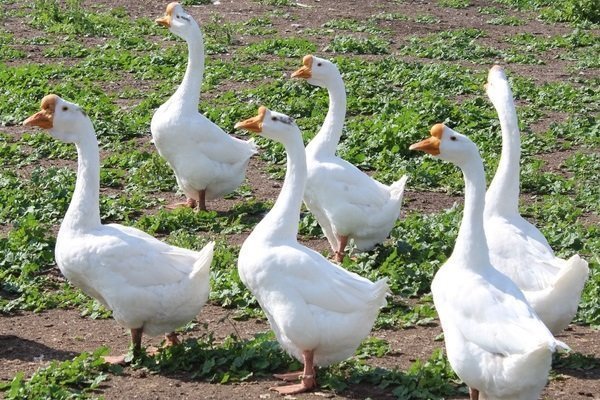
In the autumn-winter period and during the end of laying, geese are given grain. If the bird is losing weight, grain rates are increased, and meal and cake, soy or sunflower are added to wheat, corn and barley.
Feeding rates
In summer, the bird grazes on the paddock, eating food as needed. In winter, geese are fed 2 times a day – at the same time. The feeding norms of adult geese of the Chinese breed are in table 2.
Table 2
Feed Weight, g Carrot 100 Boiled potatoes 100 Cabbage 50 Grain mixture 50 Salt 0,5 Chalk 5
Recommended feeding regimen with two meals a day:
- in the morning – a mash;
- at night – cereals.
Breeding
When breeding “Chinese”, the breed is crossed with more weighty geese – in order to get more meat. For crossing, large meat breeds are usually used – Kholmogory or Toulouse. As a result of selection, geese are obtained with a large yield of meat and a moderate amount of fat.
Crosses and crosses obtained by crossing Chinese geese with meat breeds are in high demand among farmers. They are bred on a domestic and industrial scale.
Breeding chicks
Chinese geese of both subspecies are extremely prolific, but do not tend to incubate. Because of this, goslings are often hatched in an incubator. About 80% of the eggs laid in the incubator give viable offspring.
natural incubation
The goose, ready for laying, behaves restlessly. Features of natural incubation:
- Females sit on eggs from February to May, usually around the beginning of April.
- One goose incubates up to 13 eggs, it is difficult for her to heat more.
- The nest is equipped away from the herd, it should be dry and quiet here, the temperature is 15 ° C.
- If there are several hens at once, they are separated from each other by partitions.
- The hens are fed with the best grain.
- The duration of incubation is 28-30 days.
After the specified period, the eggs are placed in a box and illuminated with a lamp. When the chicks begin to hatch, they are returned to the goose. The best option is to leave the goslings with the goose. If it does not work out, the chicks are placed in a separate enclosure, warm and dry.
If one of the eggs breaks during incubation, it is removed from the nest, and the rest of the eggs are wiped.
It happens that a goose, having left the nest, does not return for more than 20 minutes, in which case it is forced to return – probably its incubation instinct is poorly developed.
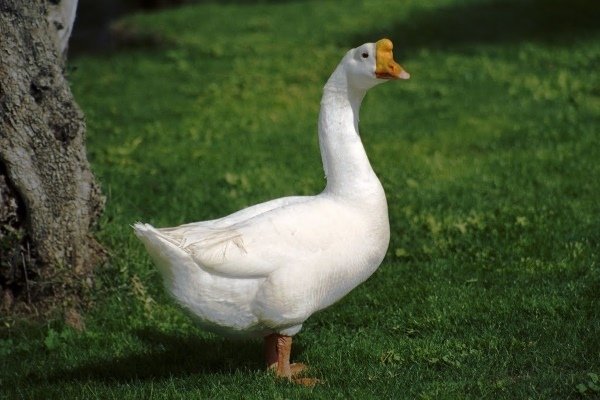
Through the incubator
With insufficient maternal instinct, when the geese refuse to incubate eggs, it is necessary to use an artificial method of breeding chicks.
For artificial breeding goslings you will need:
- incubator;
- a brooder is a device for heating chicks;
- ovoscope – a device for translucent eggs.
A good hatching result for an incubator is 70%, but sometimes higher.
Stages of incubation:
- They take eggs. The maximum “age” of eggs is 10 days. They choose smooth, healthy-looking, the shape should be perfect. They are not washed, only sprinkled with potassium permanganate – to kill germs.
- 4 hours before laying the eggs, the incubator is heated to 39°C. Humidity is maintained at 60-65%.
- The eggs are laid in an incubator and the temperature is set to 4°C for 5-38 hours. Then it is reduced to 37,8°C, and 2 days before the eggs are removed from the incubator, the temperature is lowered to 37,5°C.
- If the incubator does not have automatic turning, the eggs are turned manually up to 8 times a day – so that there is uniform heating.
- 15 days after the start of the process, the incubator is periodically ventilated. Airing time – 10 minutes.
- On the 11th and 27th day, the eggs are inspected, if there is no embryo stain, they are rejected. If during the 2nd examination a solid dark clot is visible, the embryo is dead.
Offspring
From the first days of life, goslings need proper care – at this time their immunity is formed and further development depends.
Conditions for keeping goslings
In the enclosure where goslings are kept, they maintain warmth, dryness and cleanliness. Conditions of detention:
- Temperature. In the room where the brood is located, the temperature is maintained at 28-30°C. If the goslings are uncomfortable, they lose activity:
- overheated, the chicks open their beaks and often drink;
- freezing, the goslings huddle together, and practically do not eat.
- Humidity. Should not exceed 75%. With excessive dampness, the incidence of livestock increases. The situation is aggravated by a rare change of bedding and poor ventilation.
- Airing. It is necessary from the first days of life of goslings. In the warm season, round-the-clock ventilation is desirable.
- Litter. Thickness – 3-5 cm. Update – every other day.
- Lighting. For the first 7 days, the chicks’ dwelling should be illuminated around the clock – the development, health and rate of weight gain of goslings depends on the length of daylight hours. But the separation of day and night should still be – at night the light is dimmed. After a week, daylight hours are reduced to 16-17 hours. Do this gradually, every day reducing the “day” by 30-40 minutes.
From the moment of hatching to the full plumage of goslings – 75-80 days.
Feeding goslings
Goslings need a balanced diet – then the birds will grow large and healthy. At each moment of time – your diet:
- The first 5-7 days give the yolks of boiled eggs. They add greens – finely chopped onion feathers. The first 2 days goslings are fed 7-8 times a day.
- Various herbs are gradually introduced into the diet – in addition to onions, goslings are fed with clover and alfalfa. You can not give a lot of greens at once.
- After 10 days, give fattening feed or mash. The first mixers are made from eggs, crushed corn, wheat and barley groats, a little semolina is added – for friability. Tricalcium phosphate is added to the mix – it prevents “falling on your feet.”
- After 5 days, instead of eggs, cottage cheese, crushed boiled potatoes, sunflower cake and greens are introduced into the mixture.
Vitamins “Tetravit” and “Chiktonik” are introduced into the nutrition of goslings. They are added to water. Feeders with fine gravel or crushed shells are placed in the access zone. Sand is not given to young animals.
20 minutes after feeding, the remains of the mash are removed – so that perishable components do not begin to decompose and do not lead to poisoning of the chicks.
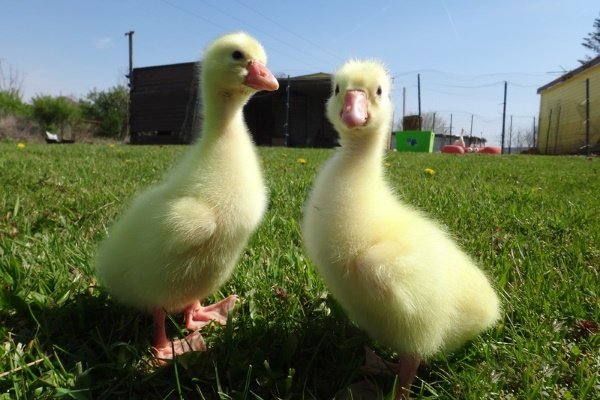
Disease and Prevention
Chinese geese are resistant to diseases and rarely get sick, especially if the conditions of detention are not violated. The main measures to prevent diseases:
- maintaining cleanliness in the poultry house;
- routine vaccination;
- compliance with area standards.
Before populating the young in the poultry house, it must be disinfected. The poultry house is also processed:
- the walls are whitewashed;
- bedding is changed;
- goslings are given a weak solution of potassium permanganate and glucose (on the second day of life) – to strengthen immunity;
- for the prevention of salmonellosis give the drug “Tilan”.
Geese suffer from infectious diseases – viral enteritis, salmonellosis, and non-infectious. The former are associated with a violation of sanitary standards, the latter are usually provoked by a violation of the rules of keeping and feeding.
Kennels and prices for geese
Prices for white and gray Chinese geese are from 1100 and 1500 rubles, respectively. You can buy breeding geese, young and hatching eggs both from private traders and in nurseries, poultry farms.
So, Chinese geese are offered by the Moscow Ecofazenda farm. And hatching eggs can be bought on the UPFERM.RU website (Moscow, Ivana Franko St., 46, building 3) or by calling +7 (965) 196-29-39.
Reviews about the Chinese breed
Anatoly N., 56 years old, amateur poultry farmer, Murom. I have been doing geese for a long time, mainly bred Kholmogorsky and Linda. Chinese geese are definitely inferior to them in weight, there is no such yield of meat. But they are ideal for selling young animals – they are very prolific. Another plus is tender and lean meat. Roman G., 47 years old, amateur poultry farmer, Kovrov. I’ve been keeping the “Chinese” for eight years. Successfully crossed them with a large gray breed. The hatchability was 95%. The weight of geese is from 6 to 10 kg. Over time, he switched to some Chinese. Ganders are very active, even at a ratio of 1:7 to geese. From one gander and 7 females last spring there was an offspring of 78 goslings. About the fact that ganders are evil – it’s true.
The main advantages of Chinese geese are ease of care and maintenance. Goslings grow by leaps and bounds, and at the same time do not require expensive feed. The bird, having a small body weight, compensates for the minus with excellent egg production and excellent taste of meat.
